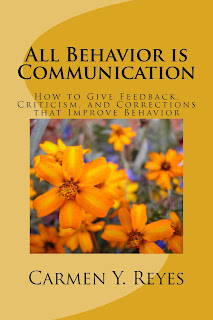Keeping the Peace: Managing Students in Conflict Using the Social Problem-Solving Approach is a book by Carmen Y. Reyes, “The Psycho-Educational Teacher.” The issue of how to communicate effectively with distressed students represents one of the biggest challenges that teachers, administrators, and support staff face in today’s schools. A different but related problem is how to resolve a conflict happening between two or more students. These are no light issues; much of what teachers and administrators describe as discipline problems and disruptive behavior in the classroom stem from breakdowns in teacher-to-student and student-to-student communication. When these breakdowns are ignored or treated poorly, conflict spins out of control. Once in a conflictive interaction, teachers and/or staff find themselves in adversarial relationships with students. Similarly, two students in conflict see each other as enemies. Angry feelings, aggressive behavior, and in most extreme cases, vi...




